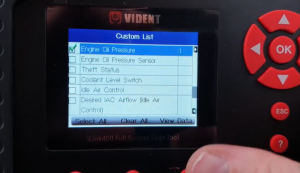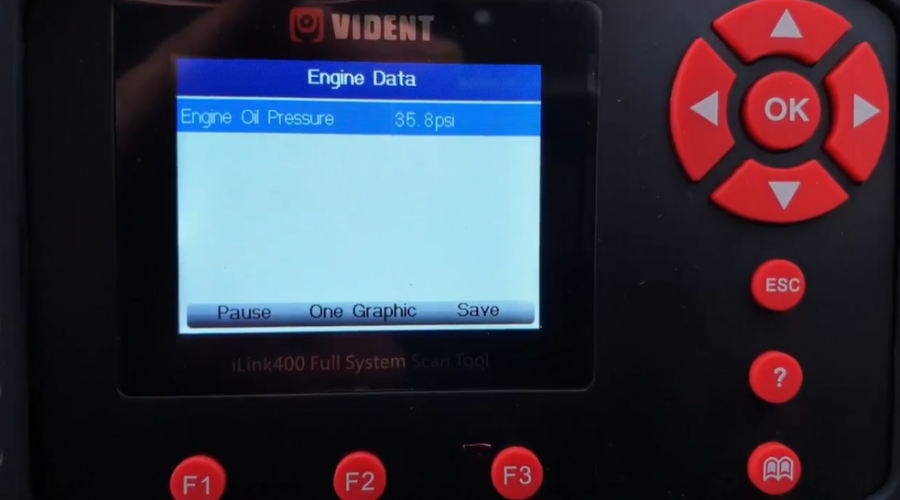If your engine is not starting and you suspect a problem with the oil pressure, you can check it with a scanner. This simple tool plugs into the diagnostic port of your car’s engine and reveals the oil pressure and other system information. For checking oil pressure, the general procedure is first to fill the engine with oil.
Then use a pressure gauge to measure the oil pressure at idle and full throttle. If the reading at full throttle is lower than the idle reading, then the oil pressure is low and needs to be replaced. Let’s know a few details on how to check oil pressure with an OBD-II scanner!
How To Check Oil Pressure With OBD-II?

When you want to check oil pressure with an obd2 scanner, then you need to follow these simple.
- Start up your car engine and let it idle for a few minutes to get warm enough to check the voltages at idle. You should see a voltage of around 12-14V.
- If using an extension cord, plug it into an electrical outlet that is compatible with your car.
- Start your car engine and let it idle for a few minutes to get hot enough to check oil pressure with a gauge or oil sensor. Oil Pressure With OBD-II
- With your scan tool, check the voltage at idle rpm. It should be around 1 volt if it is cold. If it is hot and running for a few minutes, it should be around 6 to 10 volts.
- With your scan tool, check the voltage of your gauge at idle rpm. It will be around 1 volt if it is cold. If it is hot and running for a few minutes.
How Do I Fix A Low Oil Pressure Warning Light?

To properly function the oil filter, refer to the required viscosity listed in the owner’s manual. If the engine oil pressure is higher than normal, ensure that the Oil pump is not damaged. Check the Oil pressure, level, and management system if the described symptoms are encountered.
Consider replacing the oil pressure sensor if the described symptoms are not encountered. But you can reset the oil pressure sensor if the oil pressure warning light does not go off. If you want to learn how to Reset The Oil Pressure Sensor, you are good to go here.
By pressing in on the tiny metal tab on top of your oil pressure sensor. This will activate a circuit to restart the warning light. If restarting could not solve your problem, you should do the 4 things to fix your problem.
Stop Driving
You should immediately stop the car if you see a low-oil warning light. This is a warning that the engine will not have enough oil to lubricate all its parts. If the car is driven, it may cause serious damage to the engine.
Turn Off The Engine
If driving on a busy highway, find a safe place to pull over and turn off the ignition. The vehicle manual should tell you how much oil your vehicle requires. After that, you should turn off your car engine. You should not turn off the engine while the car is moving. This could damage your engine and other components.
Check Vehicle’s Oil Level
You should ensure that the pressure on your differential is sufficient. Low oil levels may be the reason for having low oil pressure. Place the dipstick back into your car’s oil reservoir, remove it, and then reinstall it. If the oil doesn’t reach the fill line, that could be the reason for your low oil pressure.
Ask For A Tow
If the oil level is adequate, the problem may result from several sources, such as a damaged oil delivery system to a faulty oil pressure sensor.
However, the root of the problem is too high regardless of how successfully the issue is addressed. To reduce the size of an expensive repair charge, I recommend calling a maintenance service to bring the vehicle to a shop.
Can I Drive With The Low Oil Pressure Warning Light On?
No. The low oil pressure or low oil in the system can damage the vehicle’s engine and destroy the motor completely. If you turn off the car’s engine while driving or the car is running and notice the low oil warning light, you should stop driving to sort the problem out.
If the low oil pressure warning light is on and your car’s oil level is not sufficient. If the light comes on at idle but turns off as soon as you move forward, turn off your car’s engine. It should power down this warning light automatically, and you should be able to drive with it off in the future.
When it doesn’t turn off when your car’s engine is turned off, reduce your speed gradually until you have reached a speed where the gauge returns to normal.
This will allow enough time for the gauge to reset and prevent this warning light from returning unexpectedly.
Final Words
If your car doesn’t start and you think it might be because of low oil pressure, the best way to check it is with a P0521 DTC Code: Engine Oil Pressure Sensor. There are a few different devices on the market, but they all work simultaneously.
Make sure to have the correct oil pressure gauge for your vehicle, and check the oil level often because low oil pressure can lead to a dangerous engine failure.
And how to check oil pressure with an OBD-II scanner, which I’ve already explained before. So, scroll up to remind me again.


